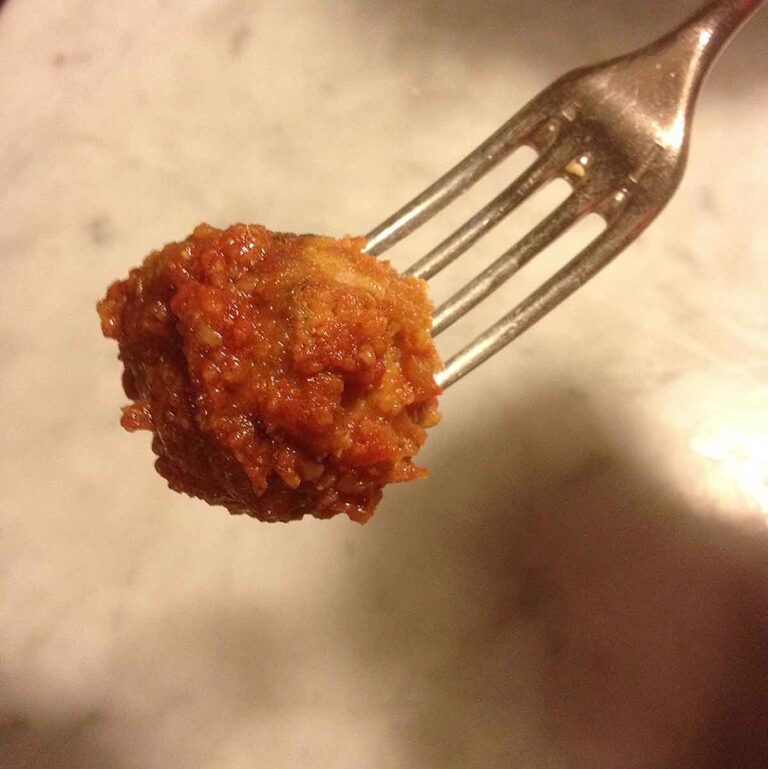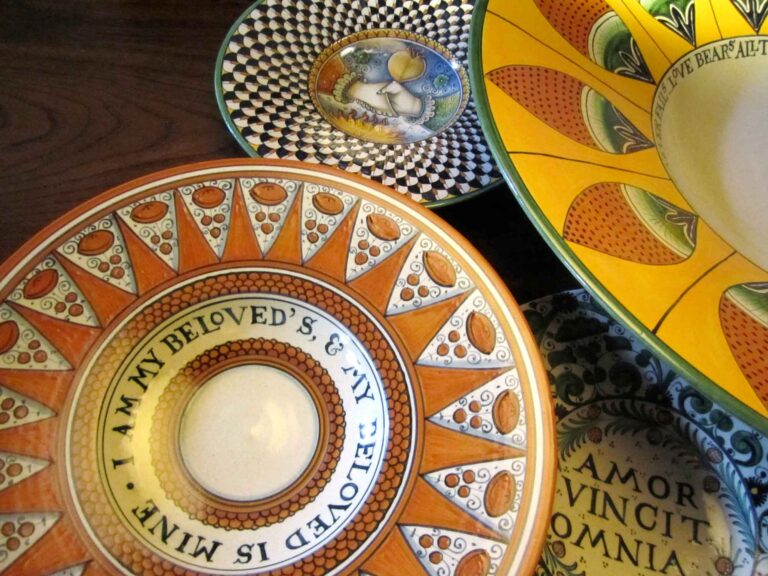Pasta fagioli (Bean soup)
If someone were to make a video about mispronounced Italian words, mispronounced Italian food words would take up more than half the content. It’s deplorable but even the best of us are not immune to repeating what we’ve heard all our lives. Once, in a bout of what I can only assume was early onset dementia, I went into a New York deli and ordered a bra-zoot and roast pepper sandwich. I stood there in a daze, wondering not only from what recess of my brain that word had crawled out of, but truly confused as to what I had actually just ordered. Luckily (or unluckily if you actually speak Italian) New York deli people understand this bastardized linguistic form and I was given a prosciutto sandwich with roasted peppers.
There, I’ve confessed.
When talking to my mother about Italian things, other mispronounced or semi Italian words always come up. That second category includes things like my grandmother’s use of baccowza, which is actually the words back house with a heavy accent. This, if you haven’t already guessed is supposed to mean bathroom.
My mother may think I’m just being a pain in the ass but I really do like to try and figure out where these words come from. Sometimes they’re just badly pronounced Italian, others times they’re something in the Sicilian dialect of her parents, and sometimes they are bonafide hybrid words. The thing about Italian Americans and our dialect is that we’ve been listening to a dialect from the early 20th century when our grandparents left Italy. It’s not merely a word in dialect but a word in and almost ancient dialect and these third generations think its Italian. When queried or corrected, most of these tangential Italians — the ones that have never visited Italy or may have been dragged through on a Perillo tour — get defensive and say, “Well that’s what my grandmother used to say.” You can sense the challenge I face. With or without my mother’s help, I push on and try and figure out what whomever meant to say.
But when it comes to mispronounced food words, and this is a whole big category of very personal mangled words, it especially pains my to hear people say pasta fazoole. As in, “Can I have a nice bowl of pasta fazoole?”
What?
Rolling my eyes, I wonder what in the name of all things culinary do they think they are saying. I cringe even writing it unsure if the abomination is spelled with a “z” or an “s” or both.
Beans! In Italian, beans are called fagioli for soup’s sake.
My mother loves bean soups and their cousin minestrone – vegetable soups that can also contain beans. She has made countless variations on the theme in her long career at the family stove. In her later years, she has turned more to the pragmatic everything-in-one-bowl philosophy creating a weekly blend with whatever she had on hand. I, however, have never been a fan.
“What’s in it?” I’d ask knowing full well the unsatisfying response I’d get.
“All good things.” She’d say.
“No, tell me what’s in it.” I’d come back.
“Its good for you.” She’d reply.
And it was a stalemate.
I just didn’t like beans. It’s not so much the taste as it is the texture. Knowing full well this aversion is because I was forced to eat them as a child, it has taken quite a bit into adulthood to finally embrace them. Actually, it has taken till now.
This August, in a Skype conversation, I asked my mother how she was feeling. Her response was, “hungry, because I’m waiting for you to come home. It was getting time to be stateside again.
At almost 92, my mother has been steadily declining so this October I closed up the palazzo and returned from Umbria to care for her. Knowing full well that a lot of my job was going to be trying to get her to eat, I (metaphorically) packed up my recipes and headed back with purpose. If anyone could get her to eat it was me. Upon my return, I was surprised by how thin she’d become, so I set about cooking her back from the brink.
The quantities were always small and sometimes she’d ask why I was bothering. But giving her food that she enjoyed and actually tasted good to her was reason enough. I made her not only the dishes that have become part of my Umbrian repertoire but nostalgic dishes that elicited the stories of her parents that I love to hear.
“Mamma used to make . . .” begins many a quality time trip down memory lane for her. (How my grandmother cooked on a wood burning stove baffled me but that’s what she had so she cooked and baked and fed her family well in that Depression era basement kitchen.)
Getting more calories in her was my mission. Mornings would start with heavy cream in her cappuccino and a half or sometimes a whole biscotti. Lunches were usually some sort of soup from real beef broth to Bolognese brodo with different pastinas and then homemade tortellini. Dinners started with heartier soups but eventually worked up to favorites like tagliatelle with cinghiale and pasta with lemon cream sauce to spare ribs and, this week, baccala fritto, which she really enjoyed. Within six weeks this labor of love was paying off. She was stronger and had gained back 5 pounds.
She’s often confused now but we sometimes have conversations about food that are spot on. Sometimes she’s still able to explain some of the recipes she knows by heart. Although these days I usually initiate those conversations, she perks up knowing she is imparting something important. So I was a tad surprised the other day after breakfast when she asked me to buy a can each of cannellini and kidney beans.
“What for?” I asked.
“I’m going to make pasta fazoole.” She replied.
Of course she was not up to cooking so I asked her to teach me so I could have her recipe. She agreed and I dutifully made mental notes knowing full well I’d add my own take on it. As with most things these days, that meant I’d be adding a bit of the taste of Umbrian in the form of a little guanciale (pigs cheek) to it.
Using the canned beans, as my mother suggested, and homemade broth I had in the freeze made this much easier to prepare. The result was a wonderfully hearty soup that surprised me no end. She even liked it so much she had a second helping. So thanks mom for showing me the way and finally getting me to appreciate something you’ve loved all along.
Lillian’s pasta fagioli:
• 1 good sized yellow onion, chopped
• 1 cup chopped celery and celery leaves
• 2 medium size carrots, chopped
• Fresh parsley and a small stem of fresh rosemary
• 2 thick slices of guanciale diced (if you must, you can use pancetta) about 200 grams
• 1 small can whole San Marzano tomatoes, crushed by hand
• Extra virgin olive oil
• 1 15oz can of cannellini beans
• 1 15oz can of kidney beans
• 4 cups beef broth*
• 1 Cup small tubular noodles (I had Ditalini on hand.)
I did not add salt or pepper because the guanciale from Norcia is quite salty and is peppered on the outside. Feel free to season as you like.
* I prefer homemade broth but you can use a good quality store bought broth if you like. (I make beef broth by slowly boiling stewing beef, beef bones, 1 yellow onion, 2 carrots, 2 stalks of celery, and water and cook it for 4 hours, adding water as needed. I let it sit in the fridge overnight and scrape off any grease and then freeze it in ZipLock bags so its ready to go.)
Cover the bottom of a large pot, I prefer a tall pot to reduce evaporation, with extra virgin olive oil. Add onions, celery, carrots, and saute until soft on medium heat – about 20 minutes. Add guanciale, then finely chopped parsley leaves and stems, and the stem of rosemary. When that is humming along nicely, add the tomatoes crushing them either by hand or with a potato masher or something on hand and saute for 20 minutes more.
Then stir in the two cans of beans and their water, bring back to a simmer and add the stock. Cook on low for 20 minutes, add the tubular pasta, and simmer for 10 to 12 minutes more until the pasta is cooked. You may need to add more broth or water to bring it to the desired consistency.
That’s how easy it is. A bowlful of memories, even if in bad Italian, start to finish, in a little over an hour.



